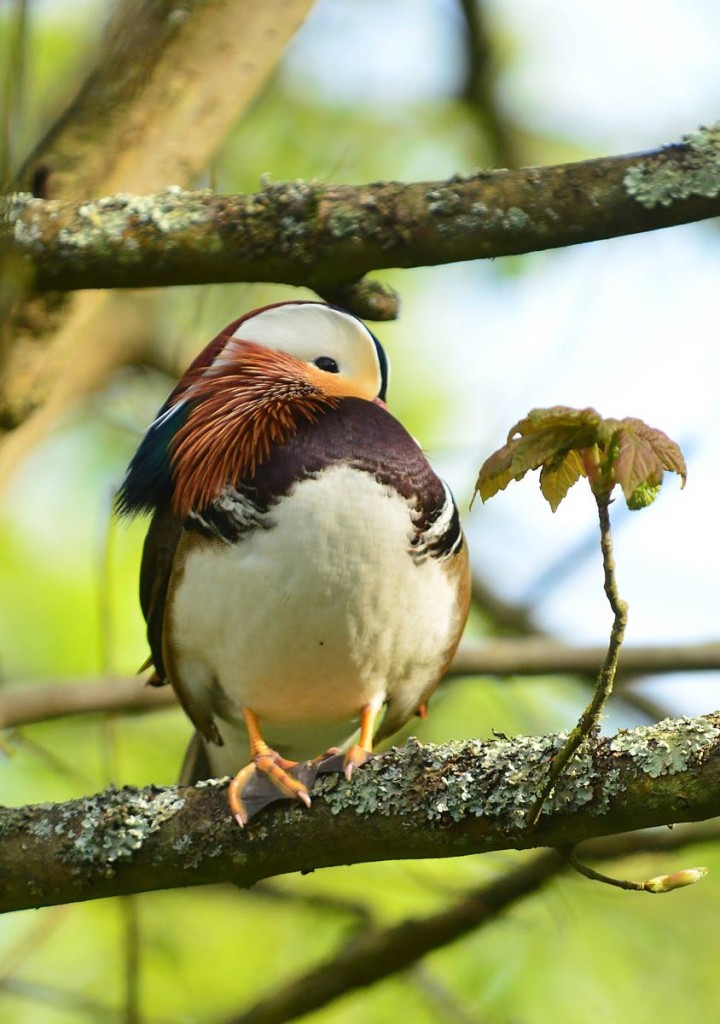Mandarin ducks take to the trees to nest
Paul Steven’s weekly Wildlife Sightings column appears in the Chichester Observer, the Littlehampton Gazette, the Bognor Regis Observer, the Shoreham Herald and the Worthing Herald.
A least one pair of mandarin ducks are nesting in the large willow tree at the entrance to the reedbed along our boardwalk. We placed an old plastic water barrel in the tree a few years ago, hoping to entice some owls to use it as a nesting box. Instead a female mandarin is inside and the drake is perched on a branch nearby. Female mandarins will build a nest in a tree cavity (or nesting box) up to 30 feet above the ground! The males guard the nest but does not help incubate the eggs.
This same willow has a natural hollow lower down on the trunk and another male is guarding it – we think there is another female nesting inside. These wild mandarins are descendants of the feral population that escaped from private gardens in the Victorian era and started breeding in the wild.
Soon after hatching, the 9-12 ducklings that make up a typical Mandarin duckling brood will leap to the ground in response to the calls of their mother. These flexible chicks land unhurt, and follow their mother to water to feed.
Last Tuesday WWT guide Russ spotted a pair of tawny owl owlets scrambling among the branches of the trees at the back of the reedbed.
Two shelduck broods recently hatched, one group near the Scrape hide and the other on Arun Riverlife. The black and white markings on the ducklings makes them look like fluffy humbug mints. Grounds supervisor Sam Halpin spotted a brood of eight pochard ducklings on the water near the Sand Martin hide on the wekend. The markings on these pretty brown ducklings with yellow faces have a smudged appearance, not as distinct as those on a mallard duckling.
Sam also spotted house martins flying over the reserve on the weekend. We have three pairs of swallows checking out the hide buildings for nesting potential on the reserve currently. Swifts have been seen moving through as well. No sand martins yet but they have been seen nearby and in Chichester.
Two reed warblers have been singing on the front pond and visitors reported seeing a female cuckoo. She may have been looking for a reed warbler nest to lay an egg in. Cetti’s warblers and sedge warblers are still singing all around the reserve.


